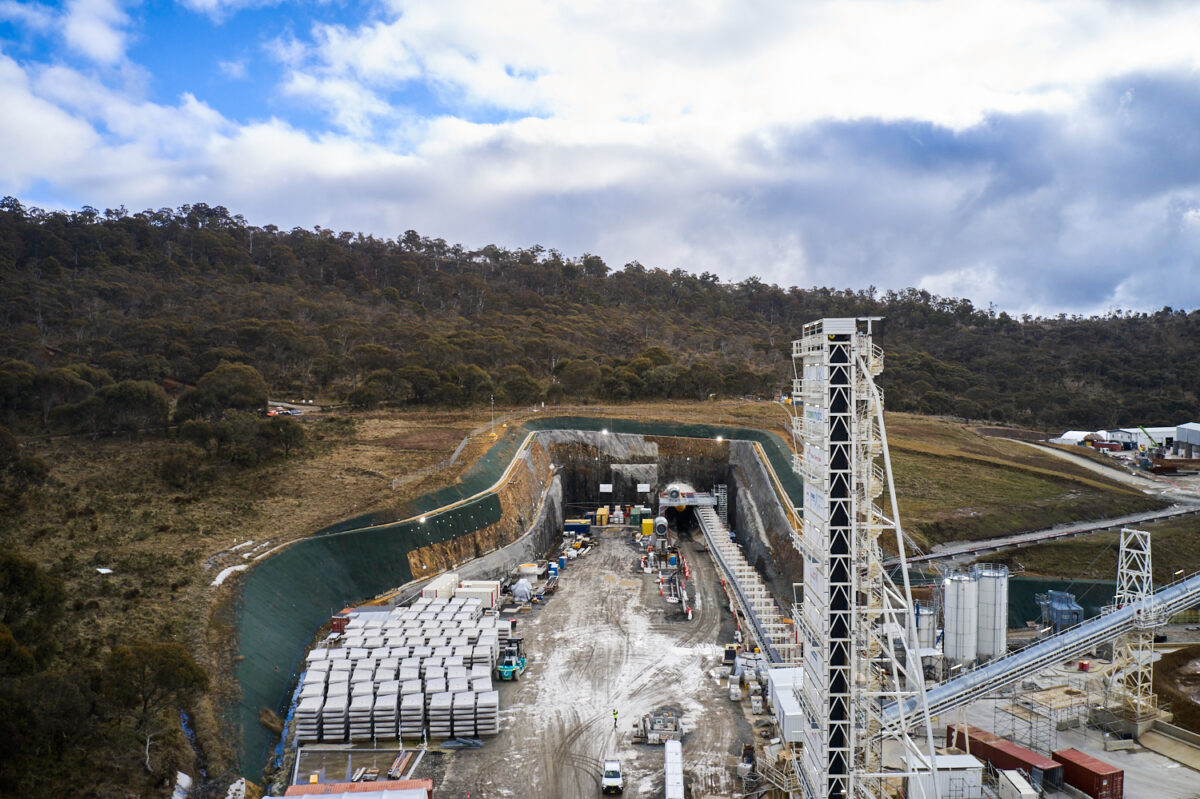Federal government-owned utility Snowy Hydro has confirmed that tunnelling has resumed on the estimated $12 billion (USD 7.99 billion) Snowy 2.0 pumped hydro project following New South Wales (NSW) government approval for the project’s planning modification.
Snowy Hydro said the 143-metre-long tunnel boring machine, named Florence, is now moving ahead with the excavation of the 17-kilometre tunnel that will link the pumped hydro project’s upper reservoir, the Tantangara reservoir, to the lower reservoir at Talbingo in the NSW Snowy Mountains.
The 2000-tonne Florence, one of three tunnel boring machines deployed on the 2 GW expansion of the existing 4.1 GW Snowy Mountain pumped hydro scheme, has been sitting almost idle since December last year after it hit soft and wet ground and caused a large sinkhole to form above it in the Kosciuszko National Park.
The company said tunnelling is now being conducted in slurry mode and progress is “slow and steady” but Snowy Hydro Chief Executive Officer Dennis Barnes welcomed the resumption of works.
“We were very pleased to receive the green light for tunnelling at Tantangara to recommence and to allow remediation of the subsidence area,” he said.
Barnes said the modified regulatory approvals extend the project’s western boundary above Florence which enable close monitoring of surface conditions as the machine advances.
“The Snowy 2.0 delivery team is acutely aware of its responsibilities working in the sensitive environment of Kosciuszko National Park,” he said. “We are focused on achieving excellent environmental outcomes throughout construction of this pumped-hydro expansion of the Snowy Scheme and critical infrastructure for Australia’s transition to renewable energy.”
Snowy Hydro said other tunnel boring operations are “making good progress”, with a machine named Lady Eileen Hudson having drilled about 1km of the tailrace tunnel at Talbingo since beginning work in July.
The Snowy 2.0 project, which will provide 2 GW of dispatchable energy and 350 GWh of long-duration energy storage to the National Electricity Market (NEM), was first announced in 2017.
The project was originally due to be operational by 2021 and was expected to cost about $2 billion but it has been plagued by time and budget blowouts. The last estimates had the cost of the project at $12 billion while the project is now expected to commence full commercial operations in December 2028.
This content is protected by copyright and may not be reused. If you want to cooperate with us and would like to reuse some of our content, please contact: editors@pv-magazine.com.









By submitting this form you agree to pv magazine using your data for the purposes of publishing your comment.
Your personal data will only be disclosed or otherwise transmitted to third parties for the purposes of spam filtering or if this is necessary for technical maintenance of the website. Any other transfer to third parties will not take place unless this is justified on the basis of applicable data protection regulations or if pv magazine is legally obliged to do so.
You may revoke this consent at any time with effect for the future, in which case your personal data will be deleted immediately. Otherwise, your data will be deleted if pv magazine has processed your request or the purpose of data storage is fulfilled.
Further information on data privacy can be found in our Data Protection Policy.